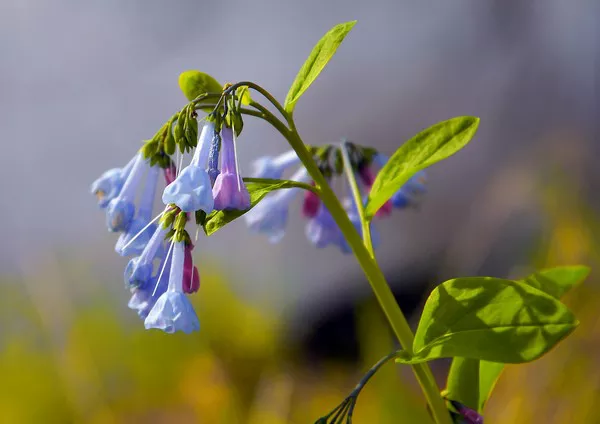Wisteria, with its cascading blooms and enchanting fragrance, is a captivating addition to any garden or landscape. However, coaxing this lovely vine to produce its signature clusters of blossoms can sometimes prove to be a challenge. Understanding the intricacies of wisteria’s growth patterns, coupled with the right techniques, can ultimately lead to a lush display of flowers. In this comprehensive guide, we will explore the art of getting wisteria to flower, from selecting the right variety to implementing proper care practices and employing strategic pruning methods.
Decoding Wisteria’s Flowering Behavior
Wisteria’s reluctance to flower is a common concern among gardeners, but it’s important to recognize that this vine follows its own unique timeline. Wisteria typically needs several years to establish itself before it starts producing flowers. Furthermore, factors such as improper pruning, inadequate sunlight, and nutrient imbalances can contribute to delayed or sparse flowering. By understanding wisteria’s growth habits and employing the right techniques, you can encourage it to burst forth with the spectacular blooms it’s known for.
1. Selecting the Right Wisteria Variety
Choose Flowering Varieties: Opt for flowering wisteria varieties such as Wisteria floribunda and Wisteria sinensis. These varieties are more likely to produce abundant blooms compared to non-flowering ones.
Consider Climate: Select wisteria varieties that are well-suited to your climate. Consult local nurseries or gardening experts to determine which varieties thrive in your region.
2. Providing Optimal Growing Conditions
Sunlight: Wisteria thrives in full sunlight. Choose a planting location that receives at least 6 to 8 hours of direct sunlight each day to encourage healthy growth and flowering.
Soil Preparation: Ensure well-draining soil with a slightly acidic to neutral pH (around 6.0 to 7.0). Amending the soil with organic matter can improve drainage and fertility.
Adequate Space: Plant wisteria vines with ample space for their sprawling growth. Provide sturdy support structures, such as arbors or pergolas, for the vines to climb.
3. Implementing Proper Pruning Techniques
Prune During Dormancy: Wisteria should be pruned during late winter or early spring, when the plant is dormant. This is the ideal time to remove excess growth and encourage flower bud development.
Training Pruning: In the early years, focus on training the wisteria’s main stem by selecting a strong leader and removing competing shoots. This encourages upward growth and stronger support for flowering.
Flowering Spur Pruning: To stimulate flower production, prune back the side shoots or laterals to about 6 inches in late summer, just after the main flowering period. This promotes the formation of flowering spurs.
Nurturing Wisteria for Optimal Flowering
1. Proper Watering and Fertilization
Watering: Keep the soil consistently moist but not waterlogged, especially during the growing season. Deep, thorough watering is more effective than frequent shallow watering.
Fertilizing: Avoid excessive nitrogen-rich fertilizers, as they can promote leafy growth at the expense of flowers. Instead, use a balanced fertilizer with a higher phosphorus content to encourage flowering.
2. Managing Nutrient Balance
Phosphorus-Rich Fertilizers: Choose fertilizers with a higher middle number in the N-P-K ratio (such as 5-10-5). Phosphorus is essential for flower production.
Organic Amendments: Incorporate organic matter like compost or bone meal into the soil to naturally increase phosphorus levels.
3. Monitoring for Pests and Diseases
Vigilant Observation: Regularly inspect your wisteria for signs of pests like aphids, scale insects, and spider mites. Treat infestations promptly to prevent damage to the plant.
Disease Management: Keep the wisteria free from fungal diseases by providing adequate spacing between plants, proper ventilation, and avoiding overhead watering.
Advanced Techniques for Flower Induction
1. Root Pruning and Stressing
Root Pruning: Every two to three years, consider root pruning to stress the plant slightly. This can be done by digging a trench around the plant and severing some of the roots. The stress can trigger flower production.
Transplanting: Transplanting wisteria to a slightly larger container or a new location can also stimulate flowering by inducing stress.
2. Girdling or Notching
Girdling: Make a shallow cut around the main stem’s circumference just below a node. This restricts the flow of nutrients and can encourage flowering.
Notching: Create a small notch on the stem just above a bud or node. This method redirects the plant’s energy and resources toward flower production.
Cultivating Patience and Persistence
1. Time and Patience: Wisteria is known for its slow transition to flowering maturity. It might take several years before you see an abundant display of blooms. Be patient and persistent in your care efforts.
2. Consistent Care: Continuously provide proper care, including watering, pruning, and soil management, to ensure the wisteria remains healthy and well-prepared for flowering.
Conclusion
Unlocking the beauty of wisteria’s flowering potential requires a blend of thoughtful cultivation, patience, and proper techniques. By selecting suitable varieties, offering optimal growing conditions, employing strategic pruning methods, and nurturing the plant with adequate water and nutrients, you can encourage wisteria to flourish with its iconic cascades of blossoms. Remember that wisteria responds to your efforts over time, rewarding you with an awe-inspiring floral spectacle that makes the journey well worth it.


